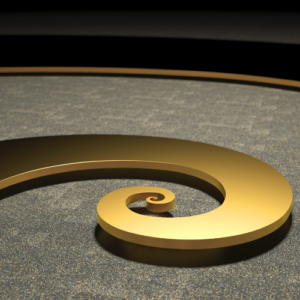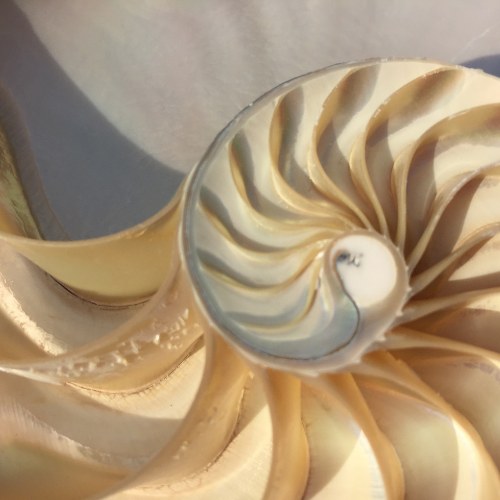The Fibonacci Sequence
The Fibonacci sequence is the series of numbers.

Mathematically
The Fibonacci sequence is the series of numbers where each number is the sum of the previous two numbers. For example, the Fibonacci sequence,
0, 1, 1, 2, 3, 5, 8, 13, 21, 34, 55, 89, 144, 233, 377, 610, …
Mathematically, we can describe this as:
xn= xn-1 + xn-2
- sequence
- Fibonacci
- Numbers
- Sum of the numbers
- Mathematically
History
Many sources claim that this sequence was first discovered or “invented” by Leonardo Fibonacci. The Italian mathematician, who was born around 1170 AD, was initially known as Leonardo of Pisa. In the 19th century, historians created the nickname Fibonacci (meaning “son of the Bonacci clan”) to distinguish the mathematician from another famous one, Leonardo of Pisa.

Keith Devlin
There are others who say he didn’t. Keith Devlin, the author of Finding Fibonacci: The Quest to Rediscover the Forgotten Mathematical Genius Who Changed the World, says that there are ancient Sanskrit texts that use the Hindu-Arabic number system – Leonardo of Pisa’s predecessor by centuries.
- Keith Devlin
- Finding Fibonacci
- Old Texts
- Sanskrit
- Number System
Under the protection of Emperor Frederick II, and for having solved mathematical problems at court, Fibonacci deepened his studies of mathematics, evaluating that the Arabic numerals would be more efficient than the Roman numbers for arithmetic calculations.
Leonardo of Pisa
But in 1202 Leonardo of Pisa published a mathematical text, Liber Abaci. It was a “cookbook” written for merchants on how to do calculations. The text introduces Hindu-Arabic arithmetic useful for tracking profits, losses, remaining loan balances, etc., introducing the Fibonacci sequence to the Western world.

Examples of the Fibonacci sequence:
Rabbits
In the book, Leonardo pondered the question: Given ideal conditions, how many pairs of rabbits could be produced from a single pair of rabbits in one year? The answer, it turns out, is 144 and the relationship used to get that answer is, you guessed it, the Fibonacci sequence. This experiment artificially dictates that female rabbits always give birth to pairs consisting of a male and a female.
- Leonard
- Math text
- Liber Abaci
- Calculations
- arithmetic
Rabbits
At first, two newborn rabbits are placed in a fenced yard and left to breed. After the first month, only the original pair is left, as rabbits cannot breed until they are at least one month old. At the end of the second month, the first pair gives birth, now leaving two pairs of rabbits. In the third month, the original pair of rabbits produce another pair of newborns while their previous offspring grow to adulthood. This leaves three pairs of rabbits, two of which will give birth to two more pairs the following month. The total number of rabbits follows Fibonnaci’s sequence. After 12 months, there will be 144 pairs of rabbits. After two years, the number would jump to 46,368 pairs!


Spirals
There is a special relationship between Fibonacci numbers and the Golden Ratio, a ration that describes when a line is divided into two parts and the larger part (a) divided by the smaller part (b) equals the sum of (a) + (b) divided by (a), which both equal 1.618. This is represented by the Greek letter (φ). The ratio of any two successive Fibonacci numbers approaches the value of the golden ratio ( φ = 1.6180339887…). The larger the pair of Fibonacci numbers, the closer the approximation. From this, mathematicians can calculate what is called a golden spiral, or a logarithmic spiral whose growth factor is equal to the golden ratio.
Quote from the Italian mathematician Leonardo of Pisa or Fibonacci If by any chance I have omitted something more or less appropriate or necessary, I ask forgiveness, for no one is exempt and circumspect in all matters. Phrase and photo taken from: https://mathshistory.st-andrews.ac.uk/Biographies/Fibonacci/
Using the values from the sequence
Using the sequence values as the length of the edges of the squares arranged as below, a spiral is generated.
In Nature
There are many examples of Fibonacci numbers (numbers that appear in the sequence) appearing in the natural world. However, just because a series of numbers can be applied to an object, this does not imply that there is a correlation between mathematics and reality.

In Nature
Fibonacci numbers appear in nature often enough to prove that they reflect some naturally occurring patterns. You can commonly identify them by studying the way various plants grow.
- Nature
- Frequency
- Sufficient
- Standards
- Form
Patterns in spirals
Many seed heads, pine cones, fruits and vegetables have spiral patterns that when counted express Fibonacci numbers. Look at spirals of seeds in the center of a sunflower and you will observe patterns that curve left and right. If you count these spirals, their total will be a Fibonacci number. Divide the spirals into those pointing left and right, and you will get two consecutive Fibonacci numbers. You can decipher the spiral patterns in pine cones, pineapples, and cauliflower that also reflect the Fibonacci sequence like this
Fonte: https://www.imaginationstationtoledo.org/about/blog/the-fibonacci-sequence
